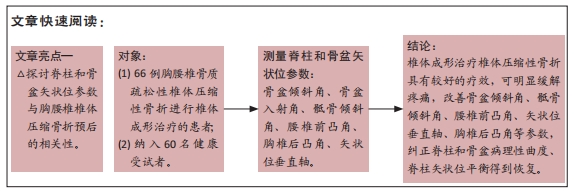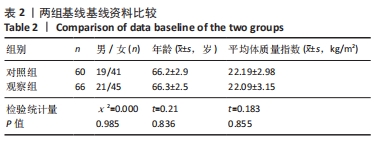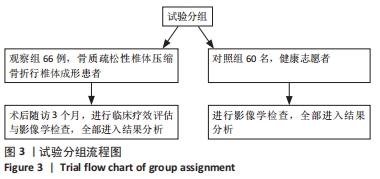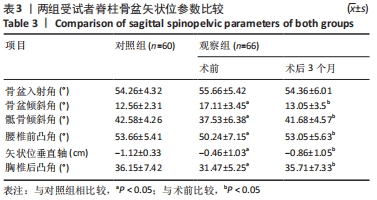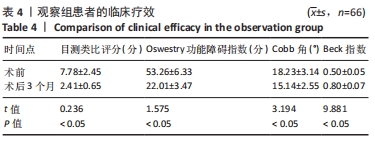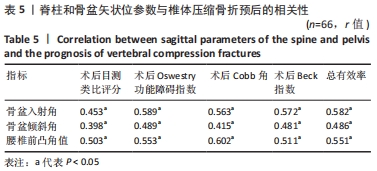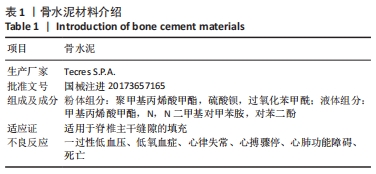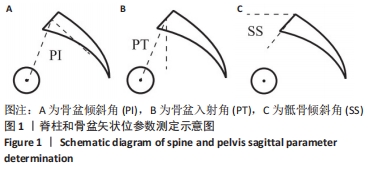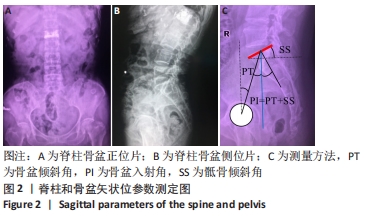[1] MILLER PD. Clinical Management of Vertebral Compression Fractures. J Clin Densitom. 2016;19(1):97-101.
[2] KOSUKE S, TOSHINORI S, KEISUKE A, et al. Complete Fracture-Dislocation of the Thoracolumbar Spine with No Critical Neurological Deficit: A Case Report. J Med Invest. 2016;63(12):122.
[3] CAMACHO JE, USMANI MF, STRICKLAND AR, et al. The use of minimally invasive surgery in spine trauma: a review of concepts. J Spine Surg. 2019;5(S1):91-100.
[4] 秦琦,史晨辉,王维山,等.经皮椎体后凸成形和椎弓根螺钉内固定治疗老年骨质疏松胸腰椎压缩性骨折的Meta分析[J].中国组织工程研究,2018,22(23):3766-3772.
[5] 邹向南.高粘度骨水泥椎体成形术治疗骨质疏松性椎体压缩骨折的椎体高度恢复情况及相关影响因素 [J].中国脊柱脊髓杂志,2017, 11(27):38-43.
[6] BAEK SW, KIM C, CHANG H. The relationship between the spinopelvic balance and the incidence of adjacent vertebral fractures following percutaneous vertebroplasty. Osteoporos Int. 2015;26(5):1507-1513.
[7] CHAU L, HU Z, KO K, et al. Global sagittal alignment of the spine, pelvis, lower limb after vertebral compression fracture and its effect on quality of life. BMC Musculoskelet Disord. 2021;22(1):476.
[8] 张相伟,孙建民,崔新刚,等.骨质疏松椎体压缩性骨折患者脊柱矢状面的失平衡[J].中国组织工程研究,2014,18(26):4224-4228.
[9] 郭新虎,李危石,郭昭庆,等.高度发育不良性腰椎滑脱复位程度与脊柱-骨盆矢状位参数变化的关系 [J].中国脊柱脊髓杂志,2020, 12(28):345-348.
[10] ZHANG YL, SHI LT, TANG PF, et al. Correlation analysis of osteoporotic vertebral compression fractures and spinal sagittal imbalance. Orthopade. 2017;46(3):249.
[11] HUSSAIN S, ZARKAR A, ELMODIR A, et al. Vertebral compression fracture rate following stereotactic ablative body radiotherapy for spine oligometastases: a UK experience. J Radiother Pract. 2021;22(2):1-5.
[12] 王福兵,张夏琦,彭庆辉,等. L5~S1椎间融合术对腰椎矢状位参数和邻近节段退变的影响[J].南京医科大学学报(自然科学版),2019, 39(7): 1028-1033.
[13] 邢润麟,张顺聪,江晓兵,等.脊柱矢状面失衡对骨质疏松性椎体压缩性骨折椎体成形术疗效的影响 [J].脊柱外科杂志,2017,15(2): 106-110.
[14] OH HS, KIM TW, KIM HG, et al. Gradual Height Decrease of Augmented Vertebrae after Vertebroplasty at the Thoracolumbar Junction. Korean J Neurotrauma. 2016;12(1):18-21.
[15] DU PLESSIS AM, GREYLING LM, et al. Differentiation and classification of thoracolumbar transitional vertebrae. J Anat. 2018;232(5): 850-856.
[16] PARK SK, PARK JG, KIM BS, et al. Thoracolumbar junction: morphologic characteristics, various variants and significance. Br J Radiol. 2016; 89(64):766-784.
[17] ANWAR HA, BUTLER JS, YARASHI T, et al. Segmental Pelvic Correlation (SPeC): a novel approach to understanding sagittal plane spinal alignment. Spine J. 2015;15(12):2518-2523.
[18] SHARIFNEZHAD A, RAISSI GR, FOROGH B, et al. The Validity and Reliability of Kinovea Software in Measuring Thoracic Kyphosis and Lumbar Lordosis. Iran Rehabil J. 2021;19(2):129-136.
[19] NASTO LA, PEREZ-ROMERA AB, SHALABI ST, et al. Correlation between preoperative spinopelvic alignment and risk of proximal junctional kyphosis after posterior-only surgical correction of Scheuermann kyphosis. Spine J. 2016;15(12):21-26.
[20] PORTO AB, OKAZAKI VHA. Thoracic Kyphosis and Lumbar Lordosis Assessment by Radiography and Photogrammetry: A Review of Normative Values and Reliability. J Manipulative Physiol Ther. 2018; 41(8):712-723.
[21] RABEI R, PATEL K, GINSBURG M, et al. Percutaneous Vertebral Augmentation for Vertebral Compression Fractures: National Trends in the Medicare Population (2005–2015). Spine (Phila Pa 1976). 2019; 44(2):123-133.
[22] HONG JY, CHOI SW, KIM GD, et al. Reliability Analyses of Radiographic Measures of Vertebral Body Height Loss in Thoracolumbar Burst Fractures. World Neurosurg. 2019;129:e191-e198.
[23] 许九生,王俊魁,刘宏建,等.T1骨盆角与胸腰椎骨质疏松性椎体压缩骨折脊柱-骨盆矢状位平衡的研究[J].中华实验外科杂志, 2017,34(4):697-699.
[24] FARUQI S, TSENG CL, WHYNE C, et al. Vertebral Compression Fracture After Spine Stereotactic Body Radiation Therapy: A Review of the Pathophysiology and Risk Factor. Neurosurgery. 2018;83(3):314-322.
[25] WEI X, GENGWU L, CHAO C, et al. Correlations between the sagittal plane parameters of the spine and pelvis and lumbar disc degeneration. J Orthop Surg Res. 2018;13(1):137-139.
[26] STAUDE V, RADZISHEVSKA Y, ZLATNYK R. Radiometric parameters of the sacrum and pelvis, affecting the spine and pelvic balance in the frontal plane, in healthy volunteers. Ortop Travmatol Protez. 2017;(2):52-61.
[27] KOTELNIKOV AO, RYABYKH SO, BURTSEV AV. Postural changes of the vertebral-pelvic balance in patients with Hip-Spine syndrom. Genij Ortop. 2020;26(1):206-211.
[28] DREISCHARF M, PRIES E, BASHKUEV M, et al. Differences between clinical “snap-shot” and “real-life” assessments of lumbar spine alignment and motion – What is the “real” lumbar lordosis of a human being? J Biomech. 2016;49(5):638-644.
[29] LE HUEC JC, GILLE O, FABRE T. Sagittal balance and spine-pelvis relation: A French speciality? Orthop Traumatol Surg Res. 2018;104(5):551-554.
[30] LAOUISSAT F, SEBAALY A, GEHRCHEN M, et al. Classification of normal sagittal spine alignment: refounding the Roussouly classification. Eur Spine J. 2018;27(8):2002-2011.
[31] HAN F, WEISHI L, ZHUORAN S, et al. Sagittal plane analysis of the spine and pelvis in degenerative lumbar scoliosis. J Orthop Surg (Hong Kong). 2017;25(1):4741-4746.
[32] HAFFER H, ADL AMINI D, PERKA C, et al. The Impact of Spinopelvic Mobility on Arthroplasty: Implications for Hip and Spine Surgeons. J Clin Med. 2020;9(8):552-556.
[33] MERRILL RK, KIM JS, LEVEN DM, et al. Differences in Fundamental Sagittal Pelvic Parameters Based on Age, Sex, and Race. Clin Spine Surg. 2018;31(2):109-114.
[34] ARIMA H, DIMAR JR, GLASSMAN SD, et al. Differences in lumbar and pelvic parameters among African American, Caucasian and Asian populations. Eur Spine J. 2018;27(12):2990-2998.
[35] YOSHIKI A, SHUNJI T, HIROYUKI O, et al. Sagittal spino-pelvic alignment in adults: The Wakayama Spine Study. PloS One. 2017;12(6):e0178697.
[36] ZHOU S, SUN Z, LI W, et al. The standing and sitting sagittal spinopelvic alignment of Chinese young and elderly population: does age influence the differences between the two positions? Eur Spine J. 2020;29(3): 405-412.
[37] LI Y, SHEN Z, HUANG M, et al. Stepwise resection of the posterior ligamentous complex for stability of a thoracolumbar compression fracture. Medicine (Baltimore). 2017;96(35):342-346.
[38] FILARDI V, SIMONA P, CACCIOLA G, et al. Finite element analysis of sagittal balance in different morphotype: Forces and resulting strain in pelvis and spine. J Orthop. 2017;14(2):268-275.
[39] RADCHENKO V, SKIDANOV A. Changes in the paravertebral muscles in patients with degenerative diseases of the lumbar spine. Ortop Travmatol Protez. 2018;10(3):50-56.
[40] LONG Y, YI W, YANG D. Advances in Vertebral Augmentation Systems for Osteoporotic Vertebral Compression Fractures. Pain Res Manag. 2020;12(7):3947-3954.
[41] HU KZ, CHEN SC, XU L. Comparison of percutaneous balloon dilation kyphoplasty and percutaneous vertebroplasty in treatment for thoracolumbar vertebral compression fractures. Eur Rev Med Pharmacol Sci. 2018;22(1 Suppl):96-102.
[42] CHANG DG, HA KY, KIM YH, et al. Spinopelvic Alignment by Different Surgical Methods in the Treatment of Degenerative Sagittal Imbalance of the Lumbar Spin. Clin Spine Surg. 2017;30(4):390-397.
|
